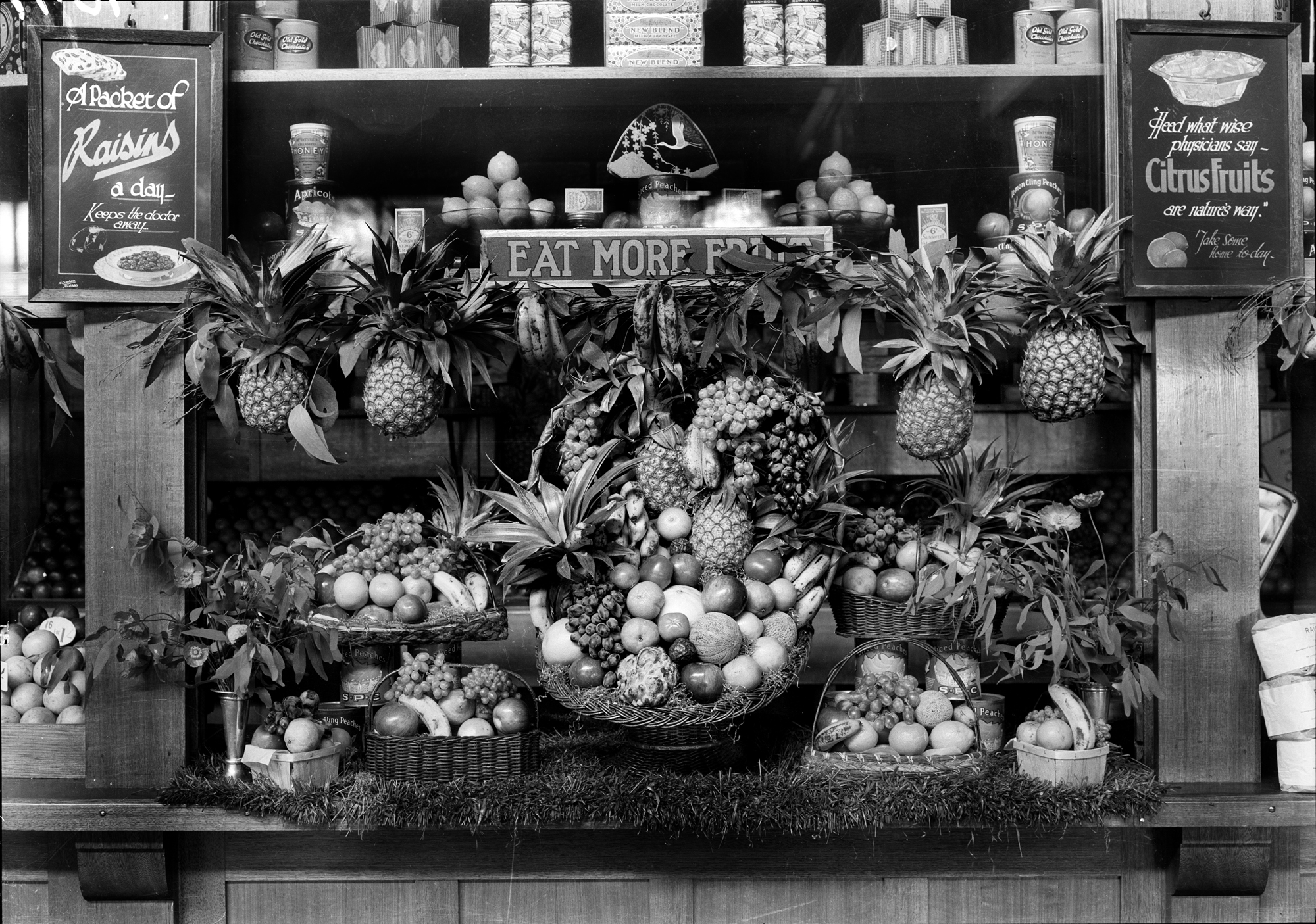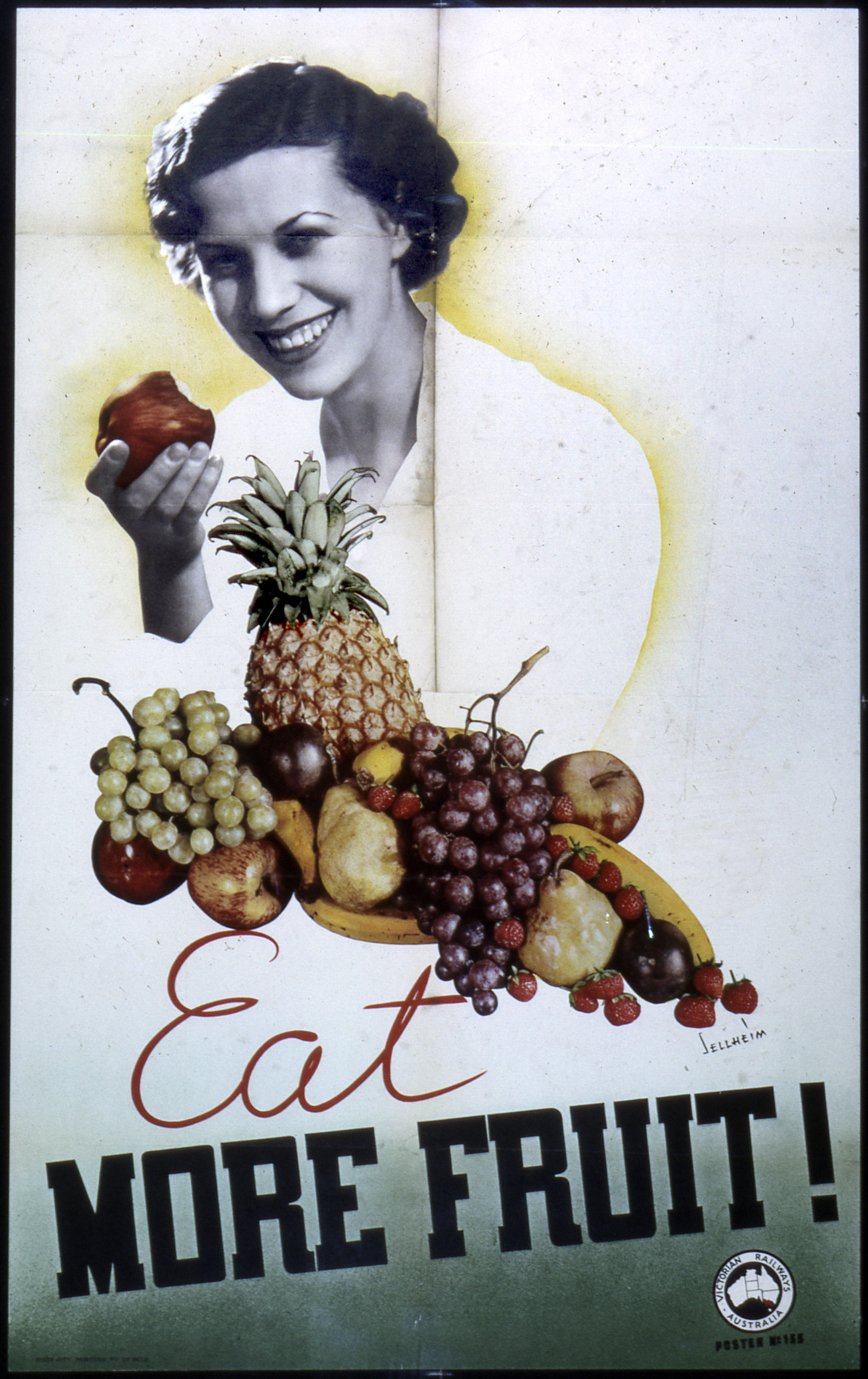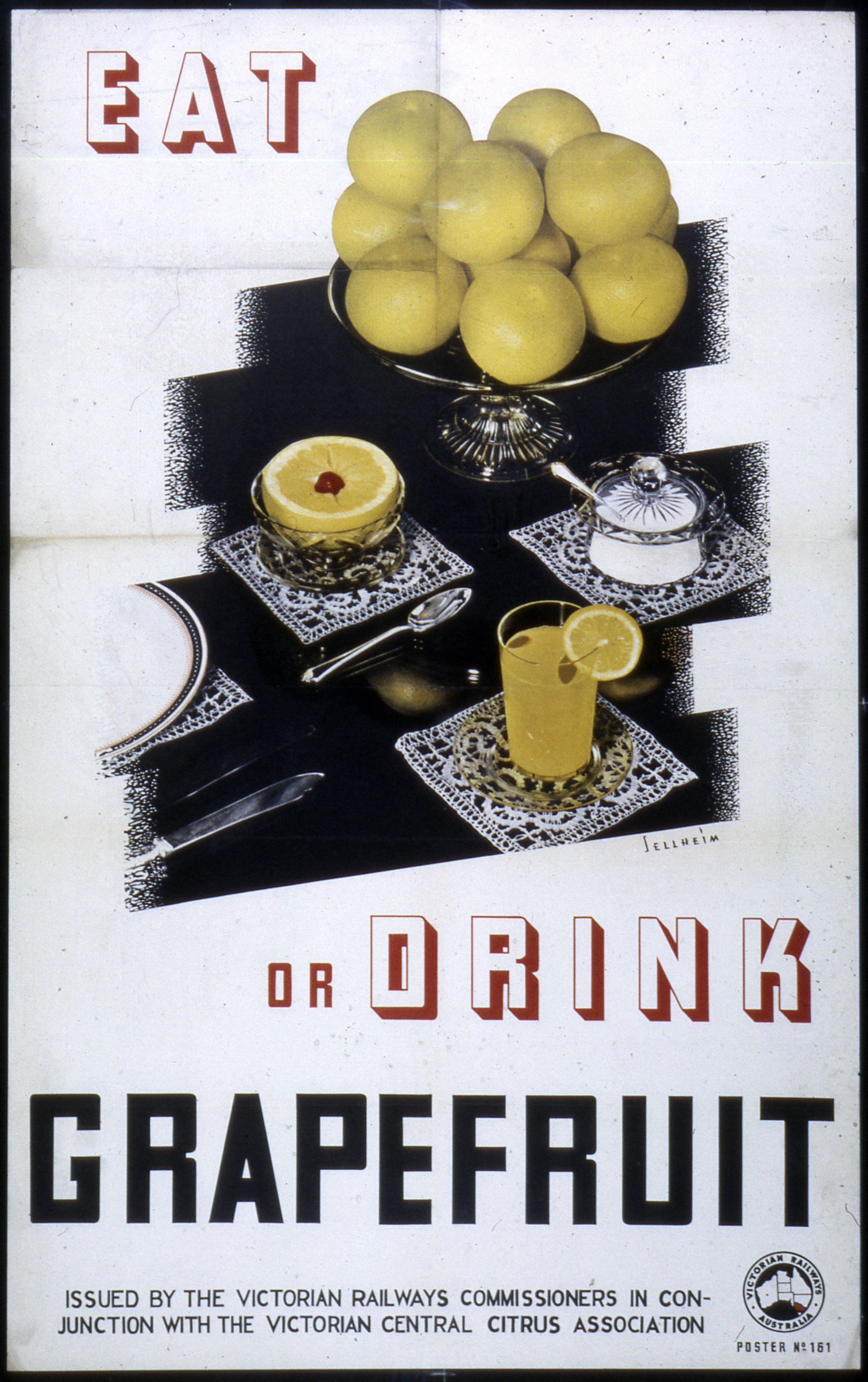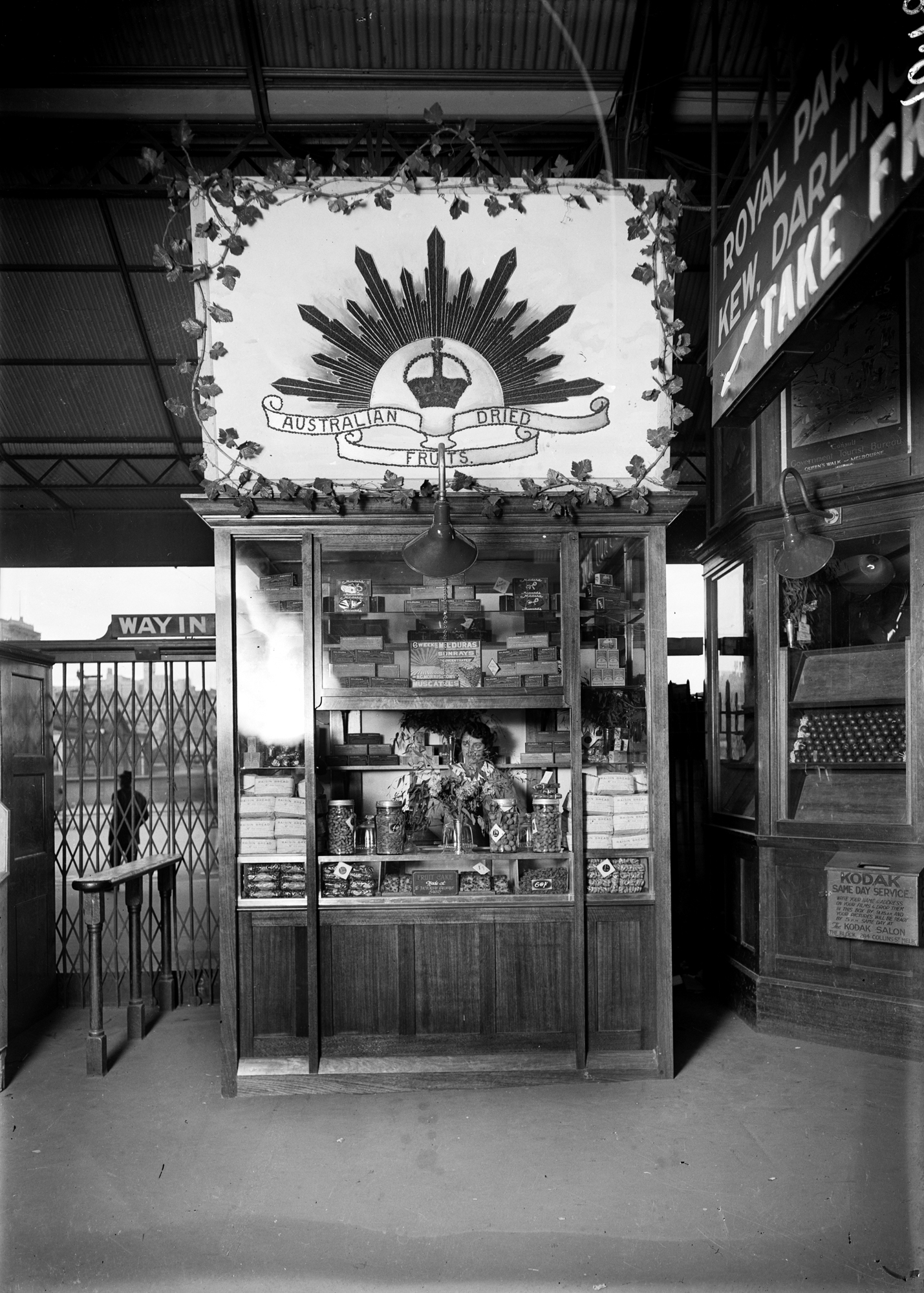
Author: Natasha Cantwell
Communications & Public Programming Officer
PROV’s photographic collection contains a number of oddities. If you’re a researcher, you may have stumbled across one of these images and found yourself wondering why it exists. If you’ve discovered the black and white photographs from the 1920s, each titled Raisin Bread, Mr Braddish? then you’ve almost certainly had this thought! This perplexing series includes a raisin loaf from various angles, as well as a close up of nine raisins, carefully arranged in grid formation. (If you’re curious, click here)
The key person behind these images is not, as you’d expect, Mr Braddish, but rather a Mr Clapp, who became Chairman of the Victorian Railways Commissioners on 17 September 1920. Harold Winthrop Clapp was a ‘think outside the box’ kind of leader who believed that “the prosperity of the railways depended on the producers and manufacturers of the State.” 1 Clapp figured that if he could encourage Victorians to purchase more local produce, then demand would grow for the railway’s freight business. By 1923 he was able to test his theory by opening the first chain of fruit kiosks in Flinders Street Station. Lush, tropical and bursting with life, the fresh and dried fruit stalls were gorgeous displays, so full of produce that there was barely any room for the shop assistants! It’s a shame that they were documented in black and white, but you can imagine how colourful they must have looked in real life.

A reporter for the Melbourne newspaper The Argus wrote in 1926, "Referring to the "eat more fruit" campaign, Mr. Clapp said that he had been taken to task by artists and architects for defacing the Flinders street station with posters and fruit stalls. It was said that he made people laugh at him, but that showed that the posters were an excellent effort at publicity." 2
While his predecessor had outsourced advertising to a private company, Clapp took a hands-on approach and by 1 July 1923 had taken over the whole railway advertising business. He began commissioning strikingly modern posters from the leading graphic artists of the day, including James Northfield and Gert Sellheim. Sellheim’s posters from the 1930s are especially memorable for their use of bold fonts and photo collage. Ingeniously, he would contrast the bright colours of the fruit against an otherwise black and white image.


These posters would hang in railway stations across Melbourne alongside advertisements for local travel, together promoting a wholesome lifestyle of fresh produce and day trips to the countryside. The “healthful restorative” 3 aspect of the fruit was heavily marketed, even if products were loaded with added sugar. When the first juice bar opened on 2 November 1926, the superintendent of Refreshment Services, Mr W.D. Bracher described the mixture of freshly squeezed fruit juice, sugar, syrup and soda as “pure and wholesome.” 4 A statement that would be met with much scepticism today!

Clapp was enthusiastic about dried fruit too and every effort was made for these kiosks to be just as appealing as the fresh stalls. The stall signage below for ‘Australian dried fruits’ appears to be made entirely out of raisins! These weren’t just fruit stalls, they were visual installations, just as artful as the posters that surrounded them. Carefully arranged jars of nuts and raisin boxes sat alongside Clapp’s personal favourite –raisin bread, which brings us back to Raisin Bread, Mr Braddish?

In October 1923, the Victorian Railways opened a bakery, in part to produce the scones and pies required for the station refreshment rooms, but more importantly, to launch a type of bread considered to be a novelty at the time. Before 1923, only three bakers in Melbourne made raisin bread. Once the railways bakery opened, 600 loaves a day were being distributed across Melbourne’s train stations and raisins became synonymous with the railways. In fact, during 1925, the slightly absurd slogan “Everyday, in Everyway…. Raisins” was emblazed across Flinders Street Station.

The ‘Eat more fruit’ campaign was hugely successful throughout the 1920s and early 1930s. However, with the increasing popularity of car travel and faster trains cutting journey times, the public’s desire for railway refreshments began to wane. Then, on 30 June 1939 Clapp left the railways to become general manager of the Aircraft Construction Branch of the Commonwealth Department of Supply and Development. His departure marked the end of Victoria’s ‘Eat more fruit’ era.
1 & 2. “Railways Operations: Address by Mr Clapp” (1926, March 16). The Argus. Retrieved from https://trove.nla.gov.au/newspaper/article/3740012
3 & 4. Symons, M.(1982). One Continuous Picnic: A Gastronomic History of Australia. Melbourne, Australia: Melbourne University Press (page 144)
Material in the Public Record Office Victoria archival collection contains words and descriptions that reflect attitudes and government policies at different times which may be insensitive and upsetting
Aboriginal and Torres Strait Islander Peoples should be aware the collection and website may contain images, voices and names of deceased persons.
PROV provides advice to researchers wishing to access, publish or re-use records about Aboriginal Peoples
